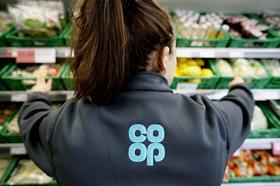
The multiples enjoyed a year-on-year sales rise of four per cent in the 12 weeks to 9 September, according to Kantar Worldpanel, with high temperatures and the World Cup providing a welcome boost.
Spanning the World Cup kick off in June through to the August bank holiday and beyond, the figures show that sales rose at all the major retailers, with convenience stores enjoying particularly strong growth.
Asda performed best among the Big Four, boosting its sales by 3.1 per cent, with Aldi growing fastest overall, up 13.9 per cent.
Consumers spent £228 million more on alcohol, £178m more on soft drinks and £74m more on ice cream, while the overall grocery market grew by 3.8 per cent.
Fraser McKevitt, head of retail and consumer insight at Kantar Worldpanel, commented:“The warm summer has been kind to the supermarkets’ convenience format stores as consumers shopped locally for drinks and barbecue supplies, collectively growing sales by 7.6 per cent compared to last year.
“Co-op was a particular beneficiary and increased sales by 8.5 per cent, its fastest rate since 2011.Tesco Express also benefited from shoppers staying close to home and performed especially well, contributing to total sales for Tesco rising 1.9 per cent.”
He added: “As speculation mounts over the launch of Tesco’s discount retailer Jack’s, it’s worth remembering how quickly rivals Aldi and Lidl have grown their market share.
“In the five years to September 2013 their combined market share increased by 2.4 percentage points to 6.8 per cent. This growth then accelerated and in the subsequent five years the two nearly doubled their share to its current level of 13.1 per cent.”
It still unclear which Tesco lines Jack’s will carry but Tesco’s ‘Exclusively at’ brands such as the deli range Eastman’s, which includes salad sides, and the dairy range Creamfields are proving popular with shoppers.
The two own-label product lines launched earlier this year and accounted for £90m of sales over the past 12 weeks, finding their way into 16 per cent of Tesco shopping baskets.
In the overall market,promotional sales fell and accounted for 32.4 per cent of total grocery sales – the lowest level since June 2009.“Retailers are looking to offer consistently lower prices on everyday items rather than one-off deals and they have all reduced promotions as a result,”McKevitt explained.
“That being said, consumers may not feel like they have more money in their pockets – grocery inflation has now reached two per cent, adding £1.64 to each household’s weekly shopping bill. At the current rate, these price increases add up to an extra £85 per home annually.”
Aldi was the UK’s fastest growing supermarket in the latest period – sales rose 13.9 per cent with nearly half of this growth coming from the fresh and chilled aisles.Meanwhile, its discount rival Lidl also outpaced the market, up 8.3 per cent.
Both retailers increased sales of branded products at a much faster rate than overall market growth, though these household brand names still only account for eight per cent of Aldi’s and 13 per cent of Lidl’s sales.
Focusing on the Big Four, Asda’s recovery continued, with sales up 3.1 per cent as the Leeds-based retailer attracted an additional 211,000 shoppers over the past 12 weeks.
McKevitt commented:“Asda rolled back prices on branded lines and at the same time sales of its core own-label ranges rose 8.4 per cent.”
Meanwhile, Morrisons released positive interim results last week and has increased sales by three per cent with its premium ‘The Best’ range a particular bright spot, growing four times faster than this overall rate.
Sales at Sainsbury’s rose at their fastest rate since December, while its share of the market fell by 0.4 percentage points to 15.4 per cent.



